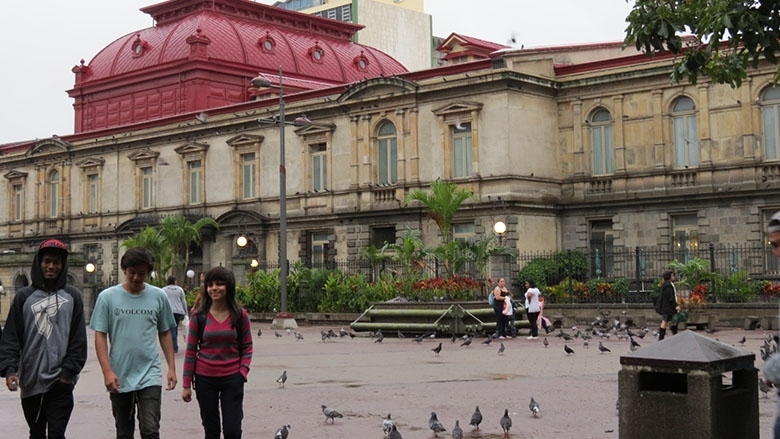Challenge
In 2011, Costa Rica’s higher education system included five public universities. Four were well-established: Universidad de Costa Rica (UCR), Universidad Nacional (UNA), Instituto Tecnológico de Costa Rica (ITCR), and Universidad Estatal a Distancia (UNED), accounting for 47% of total enrollment. (The fifth public university, Universidad Técnica Nacional, was relatively new.) In addition, the nation had approximately 50 self-financed private universities and 60 other non-university higher education institutions. While the total enrollment rate in both public and private universities was high (more than 43%), most of the recent growth had been concentrated in the private universities. Physical infrastructure and human resource limitations had forced public universities to impose quotas, disproportionately constraining access to tertiary education for the poorest students. Scholarships for students in the form of financial aid or tuition waivers reached 42% of public university students. A further issue was the disconnect between priority subject areas and the schools’ offerings: for example, only 16.7% of all university programs focused on basic sciences, engineering, and computing, and basic sciences and engineering accounted for less than 20% of graduates from public universities and 10% from private universities. Delivering on the Costa Rican government’s national priorities for growth required addressing these enrollment constraints to ensure sufficient numbers of graduates in the areas of engineering, basic sciences, natural resources, food and agricultural science, arts, education, and health sciences.
The excessive proliferation of private universities raised concerns at the national level about the qualifications of graduates and led to the creation in 1999 of the National System for the Accreditation of Higher Education (Sistema Nacional de Acreditación de la Educación Superior, SINAES). SINAES required strengthening, however, to improve the quantity of accreditations and the quality of the evaluation process. As of 2014, SINAES had only accredited 47 public university programs.
Approach
The Costa Rica Higher Education Improvement Project was designed to build and strengthen human capital by fostering knowledge and incorporating science, technology, and innovation into public universities’ priority areas to contribute to the construction of a more competitive, prosperous, inclusive, and sustainable Costa Rica. To this end, project resources were equally distributed to and applied among the four established public universities. (The relatively new Universidad Técnica Nacional did not participate in the program.) The project pursued the following aims: providing financial support to build university capacity for increasing admission rates; expanding quotas in careers requiring increased numbers of practitioners; strengthening overall scientific and technological capacity; expanding physical infrastructure, equipment, and teacher scholarships; and enhancing student services, including residences.
The project also supported the design of an innovative mechanism, the Performance Agreement, which was included in the Financing Agreement between the government of Costa Rica and each of the four participating public universities. Performance Agreements’ objectives were to improve access, coverage, quality, relevance, and innovation while fostering a better use of resources. Key to implementing and achieving these objectives were the five-year Institutional Improvement Agreements (AMI, Acuerdos de Mejoramiento Institucional) signed between the government and each of the four public universities. A first in Costa Rica, each AMI detailed the commitments of both parties regarding use of loan funds and corresponding duties; an attached Institutional Improvement Plan (PMI, Plan de Mejoramiento Institucional) articulated the institution’s university-wide and subproject-specific strategic objectives.
